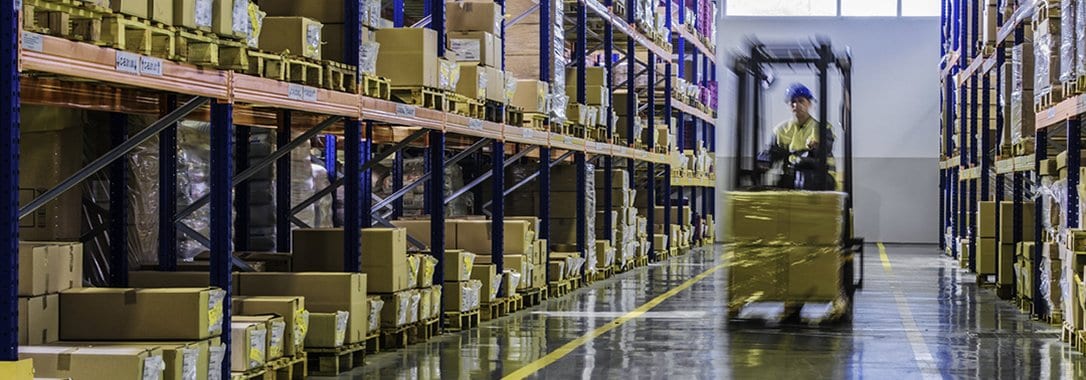Importer’s Guide to Shipping LCL

If your ocean shipments are not large enough to fill an entire container, you have what is commonly known as LCL, or less than a container load. When it comes to shipping LCLs, there are a few major differences from full container loads (FCL).
Here’s what you need to know when considering your LCL options.
1. LCL Costs Less (and more)
In simple terms, LCL shipments are less expensive than FCL shipments.
However, by shipping LCL, you are paying a premium for the space. Therefore, your landed cost per unit will end up being higher compared to a loaded full container (FCL).
Due to fixed costs such as document fees and customs clearance that don’t vary with your shipment size, your landed cost improves as your LCL shipment gets larger. For example, a 10 CBM shipment will give you a lower landed cost than a 1 CBM shipment.
That being said, LCL is often the most cost-effective way of handling smaller shipments, especially when considering the pricey alternative of air freight.
2. It Reduces Warehousing and Inventory Costs
LCL shipping can also help with lean warehousing. Having smaller, more frequent LCL shipments can reduce your spend on warehousing as well as the need to invest in large individual inventory purchases. Using LCL as a tool is important in creating a leaner supply chain.
3. Transit Time
One important difference in the flow of an LCL shipment compared to FCL is the need to consolidate/deconsolidate the shipment before/after the ocean voyage. This occurs at a specialized warehouse called a container freight station (CFS) and will add a few days of lead time at origin and destination.
Also, customs delays are more likely with less than container load shipping as you are sharing space with other importers and their delays could impact the entire container.
4. Buyer’s Consolidations Are Ideal for Multiple Suppliers
If you have multiple suppliers shipping LCL within the same geographical area, you can use Buyer’s Consolidation to create a FCL from those shipments. The right international freight forwarder can coordinate this service, allowing you to save money by consolidating your LCLs in one full container load shipment. This also reduces the chance of damage or loss since all your LCLs are in one place, and the products are only handled when they’re loaded at origin and unloaded at your warehouse. That also means faster transit times. It’s like having the best of both worlds!
5. Shipment Size
Most general commodities are charged by their volume, measured in cubic meters (CBMs). If your LCL shipment is very heavy and dense, your cargo may be charged by weight instead of volume.
Major trade lanes typically have a minimum charge of 1 cubic meter (CBM) for LCL shipments. This means if you have a ½ CBM LCL, you’re going to be charged for 1 CBM. Therefore, you typically want to ship 1 cubic meter or more for your LCL shipments.
A 20’ container has roughly 33 CBMs of space and a 40’ container is approximately 67 CBMs in total (note that usable space will be less than these numbers). As a rule of thumb, FCL is often your best option for shipment over 15 CBMs. However, there are times when it’s actually more cost effective to ship via LCL even with a slightly larger shipment. Your freight forwarder can help determine the “breakeven point” for LCL vs FCL depending on your needs and current market conditions.
6. LCL Charges
The ocean freight charge for LCL is often labeled “W/M” which stands for weight or measurement. As described above, this indicates either the shipment weight or volume in CBM. For example, if the rate is $60 W/M and the shipment is 5 CBMs, the total ocean freight rate will be $300. For very dense commodities, the WM charge would be assessed per 1,000 KG of weight.
In addition to the ocean freight explained above, LCL shipments will also incur warehouse charges for being consolidated and deconsolidated. These will include forklift fees and other charges from the Container Freight Station (CFS). Your freight forwarder may aggregate these charges into a single “CFS” or “CFS handling” fee.
The charges above are unique to LCL shipments. However, certain charges for an LCL shipment will be the same as a FCL. For example, customs clearance, duties and taxes, AMS (U.S. imports), ISF (U.S. ocean imports) would be assessed in the same way as a full container.
7. Finding the Right Forwarder for Your LCL Shipments
Coordinating your LCL shipments, especially if you use a Buyer’s Consolidation, require reliable and experienced partners, especially at origin. With the help of a freight forwarder, this process is made much easier because they can do the coordinating for you. They can also provide detailed online tracking/reports, alternative options for urgent shipments and help ensure your paperwork is in order. A good international freight forwarder has close relationships with carriers, CFS warehouses and other supply chain partners to keep your LCL shipments moving quickly and reliably.
Want to know what exactly you should look for in a freight forwarder? Check out What to Ask Your Freight Forwarder.
Not sure if LCL shipping is right for you? Contact the experts at Dedola for a personalized assessment of your shipping needs.

